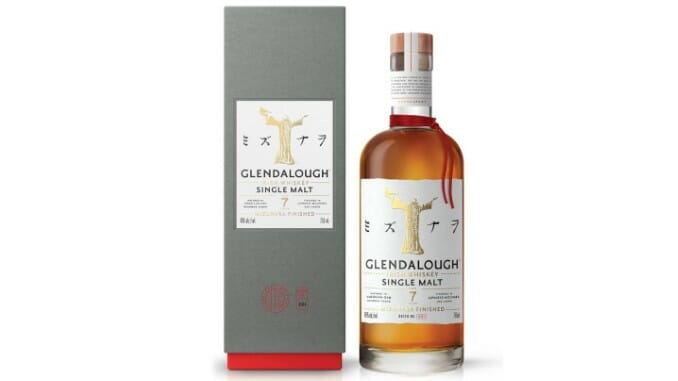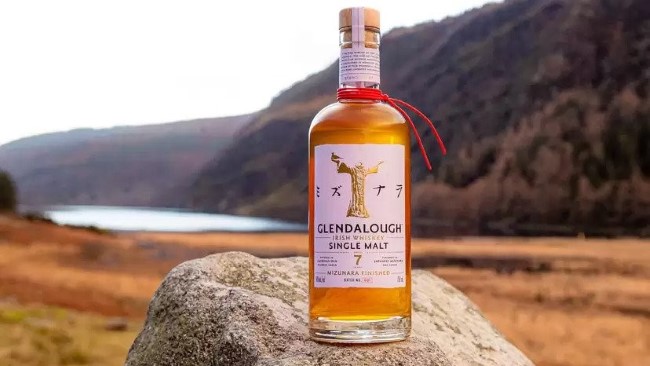Tasting: 3 Irish Whiskeys from Glendalough Distillery
Photos via Glendalough Distillery Drink Features whiskey
American consumers have an unfortunate tendency to pigeonhole certain categories of spirits, rarely more so than they do with Irish whiskey. To the vast majority of drinkers, Irish whiskey is simply a tightly defined commodity, represented in totality by the big, mass-market blends such as Jameseon, Bushmills or Powers. Like “blended” whiskeys in other markets, these are created by combining different elements, threading malt whiskeys and Irish grain whiskeys together to form a harmonious whole.
But of course, this is only the tip of the iceberg on the Irish whiskey industry. There’s the obvious allure of single malt whiskeys from Irish distilleries, or the Irish standard-bearing style of “single pot still whiskey,” made in the titular pot stills from a combination of malted and unmalted barley at a single distillery. But Irish whiskey is also subject to the same constellation of secondary barrel finishes that helps to give the world of scotch whisky such eclecticism and novelty, from secondary maturations in newly charred, “virgin” oak to finishes in sherry, port, wine or beer casks. Any of these finishes can drastically alter the final product.
Ireland’s Glendalough Distillery is a company familiar with this transformative effect, basing their product lineup heavily around an array of unique barrel finishes. They produce everything from single grain whiskey aged in sherry oak, to malt whiskey finished in porter beer barrels, but Glendalough’s most recent experiment is more exotic still. Specifically, their new Mizunara Cask series presents several malt whiskeys finished in rare Japanese Mizunara oak, prized for the unique character it imparts in spirits even though it can be quite hard (and expensive) to acquire.
You may have encountered Mizunara oak finishes in the whiskey world before, or even sampled an ultra luxe Japanese whiskey that spent its entire maturation period inside a Mizunara oak barrel. Suffice to say, Japan’s native species of oak is rare and expensive for a variety of reasons, starting with the fact that it’s challenging to grow—the trees rarely grow straight, and they need to be 200 years old or more before harvesting for use in barrels. Likewise, they present issues in aging, as they’re considerably more porous than American or European oak, which can result in lost spirit. But a Mizunara barrel, made properly, also offers a unique flavor profile that can be difficult to replicate in any other way.
Curious how this might play in Irish single malt, I accepted some samples from Glendalough, who provided samples of their new 7-year-old Mizunara Cask Single Malt, along with “base” samples of their standard, bourbon barrel-matured 3- and 7-year-old malt whiskey. So with that said, let’s get to tasting.
Glendalough Distillery 3-Year-Old Single Malt WhiskeyABV: 46% (92 proof)
This is a sample of Glendalough’s own in-house malt whiskey spirit, aged in traditional, ex-bourbon barrels. It’s not a commercially available product, but rather a sample of the younger spirit that eventually ends up as part of older Glendalough releases, such as the Mizunara Cask Finish. It represents a helpful way to follow the progression of the spirit at different points of maturity.
On the nose, this younger Glendalough single malt gives off fresh notes of green apple and oat-like grain. There’s some honeyed sweetness, and an increasing impression of charred oak that suggests the barrel—I’m assuming these were probably first-fill barrels to get that much roastiness out of them—but the overall impression is quite grain forward on both the nose and the palate. These impressions carry over to this spirit’s flavors, adding in more orange citrus to complement the apple and grain, and again I’m surprised to find a moderate degree of coffee-like roast here. All in all, though, the assertiveness of the grain (and some punchy ethanol) notes feels a bit youthful for my taste, and you can see why the distillery chooses to let this continue aging in search of more balance.
Glendalough Distillery 7-Year-Old Single Malt WhiskeyABV: 46% (92 proof)
This is a another non-commercial sample, but this time of 7-year-old malt whiskey—effectively the same age as the spirit that is being finished in the Mizunara oak casks. Like the 3-year-old sample, this malt is presented at a sturdy 92 proof, but it’s significantly more mature after spending 7 years in ex-bourbon barrels.
On the nose, this 7-year-old malt has grown appreciably more complex, with the grain profile becoming less dominant. Instead, I’m getting increased impressions of caramel or toffee, along with peach and more of that charred oak. Spice character has also increased, and I’m getting a dusting of cinnamon sugar, vanilla bean, chocolate and roasted nuts. On the palate it suggests chocolate-orange, with moderate residual sweetness that nicely rounds out the younger spirit’s rougher edges. All in all, a well-balanced malt with nutty, chocolatey complexity.
Glendalough Distillery 7-Year-Old Mizunara Cask Single Malt WhiskeyABV: 46% (92 proof)

This is the actual Mizunara Cask-finished 7-year malt from Glendalough, which is also presented at 92 proof, with an MSRP around $100. The distillery doesn’t specify how long exactly that finishing period was, but nosing the glass reveals the elements here that have been tweaked or outright transformed.
On the nose, there’s something immediately more exotic here, a combination of fruit notes and drier, oak-influenced character. The fruit has an almost tropical connotation to it, from coconut to lychee, while the woody profile provides more baking spice and perfume. The palate is likewise expressive with the spice notes, bringing a warming, chai-like character to play, combining with big roast, coffee, dark chocolate and more hints of tropical fruit. Compared with Glendalough’s similarly aged, 7-year-old malt that is solely finished in ex-bourbon barrels, the Mizunara Cask finish has a considerably more expressive spice profile, but is also a bit drier at the same time, having taken on a bit more elegant and tannic quality. There’s no doubt that it’s a more complex spirit in general.
All in all, it’s a pretty clear demonstration of how Japanese oak is able to transform a spirit in a relatively short secondary maturation.
Jim Vorel is a Paste staff writer and resident beer and liquor geek. You can follow him on Twitter for more drink writing.